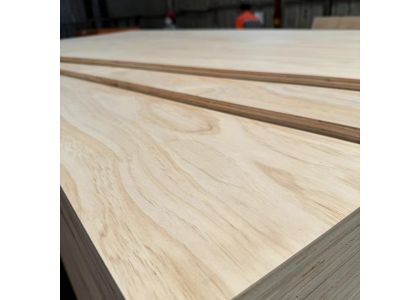
Introduction:
Plywood is a versatile building material widely used in construction, furniture manufacturing, and various other applications. The production of plywood involves several meticulous steps to ensure the highest quality and durability of the final product. In this blog post, we will explore the journey of logs transforming into finely crafted plywood sheets.
1. Selection of Logs:
The process begins with the careful selection of logs. Only mature logs with desirable physical characteristics, such as straightness and roundness, are chosen. It is imperative to ensure that the logs are sourced from legal and sustainable forest concessions, promoting responsible forestry practices.
2. Debarking:
The selected logs are then fed into a specialized machine known as a debarker. This machine rotates the logs against ridged wheels while a cutting head on a track reversely rotates with the log. This action effectively removes the bark from the logs, preparing them for the subsequent stages.
3. Peeling the Logs:
Following debarking, the logs undergo the peeling process. A large rotary lathe is employed to eliminate any residual markings left by the debarking knives. The log rotates against a long blade cutter, akin to sharpening a pencil, resulting in the continuous peeling of thin veneer sheets from the log.
4. Drying:
To achieve uniformity and stability, the peeled veneer sheets go through a mechanical drying process. A temperature-controlled mechanical dryer ensures consistent and optimal drying, removing excess moisture from the veneer sheets.
5. Compose Core:
During the compose core stage, layers of veneer are meticulously assembled to avoid overlapping and core gap issues. This process ensures the structural integrity and strength of the plywood sheets.
6. Glue Spread:
Next, the veneer sheets are bonded together to establish the desired thickness of the plywood sheets. Synthetic adhesives, such as phenol-formaldehyde or urea resins, are commonly used for their strong bonding properties.
7. Cold Hydraulic Press:
To ensure a robust bond, the glued veneer sheets are subjected to a cold hydraulic press. This process facilitates the penetration of the adhesive, resulting in a secure and durable bond between the layers.
8. Hot Press:
For precise control over pressing times, temperature, and pressure, the plywood sheets undergo a hot press stage. This step further enhances the adhesive bond, ensuring the sheets are firmly consolidated.
9. DD Saw:
In Vinayak Ply, a cutting-edge DD Saw machine is utilized to precisely cut the plywood sheets. This machine trims rough edges and cuts the sheets to the required size, enabling efficient production of various wooden boards and plywood.
10. Calibrating:
To achieve consistent thickness throughout the plywood sheets, high-tech machinery is employed for calibration. This process ensures uniformity and makes the plywood an ideal panel product for mechanized automated furniture production.
11. Sanding:
To refine the surface quality and remove any imperfections introduced during the manufacturing process, the plywood sheets undergo sanding. Mill marks, dents, and other flaws are meticulously eliminated, resulting in a smooth and aesthetically pleasing finish.
12. Chemical Dipping:
Plywood is subjected to chemical dipping, where it is treated with fire retardant, borer, termite, and nano chemicals. This treatment enhances the plywood's resistance to various hazards, increasing its longevity and durability.
13. Quality Check and Lab Test:
Before dispatching the plywood products, Vinayak Ply prioritizes quality assurance through rigorous testing. The plywood undergoes lab tests such as modulus of rupture, modulus of elasticity, internal bond strength, moisture content, density, and bending strength. These tests ensure that the plywood meets the strict quality standards set by the ISI (Indian Standards Institute).
14. Ready for Stamping & Dispatch:
After successfully passing all quality checks, the plywood sheets are ready for stamping. This step involves labeling the products with relevant information and dispatching them to distributors across India.
Conclusion:
The plywood manufacturing process involves a series of meticulous steps, from log selection to quality checks, to produce high-quality and durable plywood sheets. Each stage contributes to the strength, stability, and aesthetic appeal of the final product. By adhering to strict standards and incorporating advanced machinery, ensure that their plywood meets the diverse needs of the construction and furniture industries, offering reliable and versatile building materials.